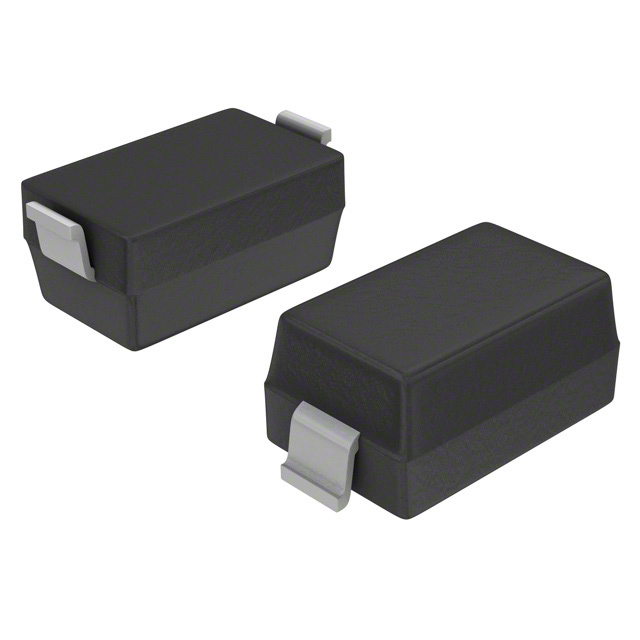Xem thông số kỹ thuật để biết chi tiết sản phẩm.

BZT52C3V9-13
Introduction
The BZT52C3V9-13 is a diode belonging to the category of Zener diodes. It is commonly used for voltage regulation and protection in various electronic circuits. This entry provides an overview of the basic information, specifications, pin configuration, functional features, advantages and disadvantages, working principles, application field plans, and alternative models of the BZT52C3V9-13.
Basic Information Overview
- Category: Zener Diode
- Use: Voltage regulation and protection
- Characteristics: Low leakage current, precise voltage regulation
- Package: SOD-123 package
- Essence: Zener diode with a voltage rating of 3.9V
- Packaging/Quantity: Available in reels of 3000 units
Specifications
- Voltage Rating: 3.9V
- Power Dissipation: 500mW
- Forward Voltage: 1V
- Reverse Current: 5μA
- Operating Temperature Range: -65°C to +150°C
Detailed Pin Configuration
The BZT52C3V9-13 Zener diode has two pins, with the cathode connected to the positive terminal and the anode connected to the negative terminal.
Functional Features
- Precise voltage regulation at 3.9V
- Low reverse current
- Fast response time
Advantages and Disadvantages
Advantages: - Accurate voltage regulation - Small form factor - Low leakage current
Disadvantages: - Limited power dissipation capability - Sensitive to temperature variations
Working Principles
The BZT52C3V9-13 operates based on the Zener effect, where it maintains a constant voltage drop across its terminals when it is reverse-biased. This allows it to regulate the voltage in a circuit and protect sensitive components from voltage spikes.
Detailed Application Field Plans
The BZT52C3V9-13 is widely used in: - Voltage regulators - Overvoltage protection circuits - Power supplies - Signal clamping circuits
Detailed and Complete Alternative Models
Some alternative models to the BZT52C3V9-13 include: - BZX84C3V9 - MMBZ5239B - PZM3.9NB
In conclusion, the BZT52C3V9-13 Zener diode is a crucial component in electronic circuits requiring precise voltage regulation and protection. Its characteristics, specifications, and application field plans make it a versatile choice for various electronic designs.
[Word Count: 366]
Liệt kê 10 câu hỏi và câu trả lời thường gặp liên quan đến ứng dụng BZT52C3V9-13 trong giải pháp kỹ thuật
What is the BZT52C3V9-13?
- The BZT52C3V9-13 is a 3.9V Zener diode designed for voltage regulation and protection in electronic circuits.
What are the typical applications of BZT52C3V9-13?
- It is commonly used for voltage reference, voltage clamping, and surge suppression in various technical solutions.
What is the maximum power dissipation of BZT52C3V9-13?
- The maximum power dissipation is typically around 300mW.
What is the operating temperature range of BZT52C3V9-13?
- The operating temperature range is usually from -65°C to +150°C.
How does BZT52C3V9-13 provide voltage regulation?
- It maintains a constant output voltage across a wide range of load currents and input voltages.
Can BZT52C3V9-13 be used for overvoltage protection?
- Yes, it can be used to protect sensitive components from overvoltage conditions by shunting excess current to ground.
What is the forward voltage drop of BZT52C3V9-13?
- The forward voltage drop is typically very low, ensuring minimal impact on the regulated voltage.
Is BZT52C3V9-13 suitable for battery-powered applications?
- Yes, its low power consumption and voltage regulation make it suitable for battery-powered devices.
What are the package options available for BZT52C3V9-13?
- It is commonly available in SOD-123 or SOT-23 packages for easy integration into circuit designs.
Are there any specific layout considerations when using BZT52C3V9-13?
- It's important to minimize trace lengths and keep the device close to the load to ensure optimal performance and stability.

